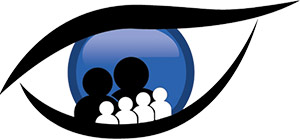As part of every comprehensive eye examination, the optometrist will assess your visual field. The visual field is the entire area that can be seen when your eyes are focused at a single point. It includes what can be seen straight ahead as well as in the periphery (the areas above, below and to either side). Vision is generally better in the central area which is where we can have 20/20 acuity.
The visual field can be assessed in multiple ways including a confrontation field (the optometrist compares your field of vision to their field of vision), tangent screen test and automated perimetry. Automated perimetry is performed using a computer which controls small flashes of light on a dome and compares your results to a database of patients of similar age. This technique allows the optometrist to monitor for progressive changes over time. Due to the learning curve associated with automated perimetry it may be necessary to repeat the test to determine the accuracy of the test.
Visual field examination is able to help detect conditions that occur in the eye and those that occur in the brain. Perimetry may be ordered for conditions like glaucoma, macular degeneration, optic nerve disorders, brain tumour, multiple sclerosis, strokes, temporal arteritis, central nervous system disorders, thyroid conditions, pituitary gland disorders, high blood pressure, abnormal retinal development, diabetes and adverse effects from certain medications like Plaquenil (hydroxychloroquine).
Perimetry is generally covered under provincial insurance (OHIP).





 Closed until 11am tomorrow
Closed until 11am tomorrow
